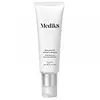What's inside
What's inside
 Key Ingredients
Key Ingredients

 Benefits
Benefits

 Concerns
Concerns

 Ingredients Side-by-side
Ingredients Side-by-side

Water
Skin ConditioningSaccharide Isomerate
HumectantPolyacrylamide
Glycerin
HumectantC13-14 Isoparaffin
EmollientAlpha-Glucan Oligosaccharide
CleansingCetearyl Isononanoate
EmollientCocoglycerides
EmollientDimethicone
EmollientNiacinamide
SmoothingNylon-12
Capryloyl Glycine
CleansingHexylene Glycol
EmulsifyingPhenoxyethanol
PreservativeSodium Benzoate
MaskingEthyl Linoleate
EmollientLauric Acid
CleansingLaureth-7
EmulsifyingSarcosine
Skin ConditioningPotassium Sorbate
PreservativeEthylhexylglycerin
Skin ConditioningPropylene Glycol
HumectantGlyceryl Polyacrylate
Cinnamomum Zeylanicum Bark Extract
AntimicrobialCitrus Aurantium Dulcis Peel Oil
MaskingCitric Acid
BufferingSodium Citrate
BufferingLactobacillus Extract Filtrate
Humectant1,2-Hexanediol
Skin ConditioningBeta-Glucan
Skin ConditioningCaprylyl Glycol
EmollientLimonene
PerfumingLinalool
PerfumingCitral
PerfumingWater, Saccharide Isomerate, Polyacrylamide, Glycerin, C13-14 Isoparaffin, Alpha-Glucan Oligosaccharide, Cetearyl Isononanoate, Cocoglycerides, Dimethicone, Niacinamide, Nylon-12, Capryloyl Glycine, Hexylene Glycol, Phenoxyethanol, Sodium Benzoate, Ethyl Linoleate, Lauric Acid, Laureth-7, Sarcosine, Potassium Sorbate, Ethylhexylglycerin, Propylene Glycol, Glyceryl Polyacrylate, Cinnamomum Zeylanicum Bark Extract, Citrus Aurantium Dulcis Peel Oil, Citric Acid, Sodium Citrate, Lactobacillus Extract Filtrate, 1,2-Hexanediol, Beta-Glucan, Caprylyl Glycol, Limonene, Linalool, Citral
Water
Skin ConditioningCaprylic/Capric Triglyceride
MaskingPropanediol
SolventCetearyl Alcohol
EmollientGlycerin
HumectantPanthenol
Skin ConditioningPrunus Armeniaca Kernel Oil
MaskingOleic/Linoleic/Linolenic Polyglycerides
EmollientCetearyl Olivate
Xylitylglucoside
HumectantEctoin
Skin ConditioningSqualane
EmollientAnhydroxylitol
HumectantSorbitan Olivate
EmulsifyingPotassium Cetyl Phosphate
EmulsifyingPhenoxyethanol
PreservativeCarbomer
Emulsion StabilisingGlyceryl Stearate
EmollientJojoba Esters
EmollientBenzyl Alcohol
PerfumingMaltodextrin
AbsorbentXylitol
HumectantSodium Lauroyl Lactylate
EmulsifyingButylene Glycol
HumectantDisodium Stearoyl Glutamate
CleansingHelianthus Annuus Seed Wax
Skin ConditioningSodium Hydroxide
BufferingMadecassoside
AntioxidantLactobacillus Ferment
Skin ConditioningEthylhexylglycerin
Skin ConditioningDehydroacetic Acid
PreservativeCeramide NP
Skin ConditioningHelianthus Annuus Sprout Extract
Skin ConditioningCeramide AP
Skin ConditioningPhytosphingosine
Skin ConditioningCholesterol
EmollientPolyglycerin-3
HumectantXanthan Gum
EmulsifyingSodium Benzoate
MaskingCentella Asiatica Leaf Extract
Skin ConditioningCeramide EOP
Skin ConditioningWater, Caprylic/Capric Triglyceride, Propanediol, Cetearyl Alcohol, Glycerin, Panthenol, Prunus Armeniaca Kernel Oil, Oleic/Linoleic/Linolenic Polyglycerides, Cetearyl Olivate, Xylitylglucoside, Ectoin, Squalane, Anhydroxylitol, Sorbitan Olivate, Potassium Cetyl Phosphate, Phenoxyethanol, Carbomer, Glyceryl Stearate, Jojoba Esters, Benzyl Alcohol, Maltodextrin, Xylitol, Sodium Lauroyl Lactylate, Butylene Glycol, Disodium Stearoyl Glutamate, Helianthus Annuus Seed Wax, Sodium Hydroxide, Madecassoside, Lactobacillus Ferment, Ethylhexylglycerin, Dehydroacetic Acid, Ceramide NP, Helianthus Annuus Sprout Extract, Ceramide AP, Phytosphingosine, Cholesterol, Polyglycerin-3, Xanthan Gum, Sodium Benzoate, Centella Asiatica Leaf Extract, Ceramide EOP
 Reviews
Reviews

Ingredients Explained
These ingredients are found in both products.
Ingredients higher up in an ingredient list are typically present in a larger amount.
Ethylhexylglycerin (we can't pronounce this either) is commonly used as a preservative and skin softener. It is derived from glyceryl.
You might see Ethylhexylglycerin often paired with other preservatives such as phenoxyethanol. Ethylhexylglycerin has been found to increase the effectiveness of these other preservatives.
Glycerin is already naturally found in your skin. It helps moisturize and protect your skin.
A study from 2016 found glycerin to be more effective as a humectant than AHAs and hyaluronic acid.
As a humectant, it helps the skin stay hydrated by pulling moisture to your skin. The low molecular weight of glycerin allows it to pull moisture into the deeper layers of your skin.
Hydrated skin improves your skin barrier; Your skin barrier helps protect against irritants and bacteria.
Glycerin has also been found to have antimicrobial and antiviral properties. Due to these properties, glycerin is often used in wound and burn treatments.
In cosmetics, glycerin is usually derived from plants such as soybean or palm. However, it can also be sourced from animals, such as tallow or animal fat.
This ingredient is organic, colorless, odorless, and non-toxic.
Glycerin is the name for this ingredient in American English. British English uses Glycerol/Glycerine.
Learn more about GlycerinPhenoxyethanol is a preservative that has germicide, antimicrobial, and aromatic properties. Studies show that phenoxyethanol can prevent microbial growth. By itself, it has a scent that is similar to that of a rose.
It's often used in formulations along with Caprylyl Glycol to preserve the shelf life of products.
Sodium Benzoate is a preservative. It's used in both cosmetic and food products to inhibit the growth of mold and bacteria. It is typically produced synthetically.
Both the US FDA and EU Health Committee have approved the use of sodium benzoate. In the US, levels of 0.1% (of the total product) are allowed.
Sodium benzoate works as a preservative by inhibiting the growth of bacteria inside of cells. It prevents the cell from fermenting a type of sugar using an enzyme called phosphofructokinase.
It is the salt of benzoic acid. Foods containing sodium benzoate include soda, salad dressings, condiments, fruit juices, wines, and snack foods.
Studies for using ascorbic acid and sodium benzoate in cosmetics are lacking, especially in skincare routines with multiple steps.
We always recommend speaking with a professional, such as a dermatologist, if you have any concerns.
Learn more about Sodium BenzoateWater. It's the most common cosmetic ingredient of all. You'll usually see it at the top of ingredient lists, meaning that it makes up the largest part of the product.
So why is it so popular? Water most often acts as a solvent - this means that it helps dissolve other ingredients into the formulation.
You'll also recognize water as that liquid we all need to stay alive. If you see this, drink a glass of water. Stay hydrated!
Learn more about Water